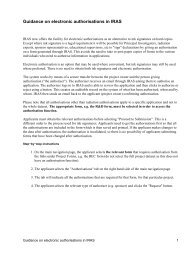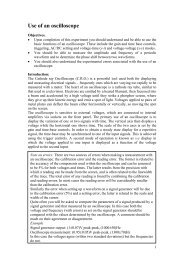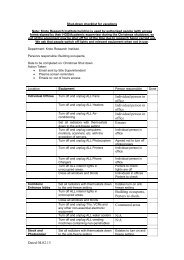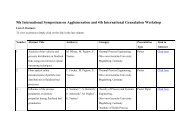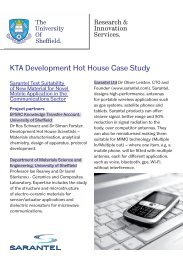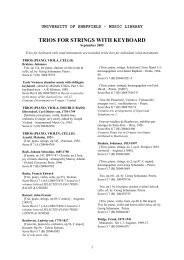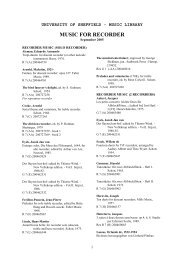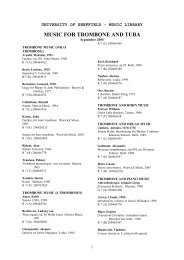Huron & SNAP Documentation
Huron & SNAP Documentation
Huron & SNAP Documentation
You also want an ePaper? Increase the reach of your titles
YUMPU automatically turns print PDFs into web optimized ePapers that Google loves.
Generating Test Signals<br />
↓ To create the *.INV file<br />
Notes on Test Signals<br />
It is possible to generate test signals to be<br />
used by the Measurement Tool. Each test<br />
signal file saved in the SIM (*.SIM) format<br />
requires a corresponding inverted SIM file<br />
(*.INV).<br />
Given a test signal in a *.SIM file, the<br />
appropriate *.INV file can be generated by<br />
the Matlab function makeinv.m in the<br />
examples/huronmat subdirectory of the<br />
<strong>Huron</strong> CDROM.<br />
THE ENGINEERING TOOLS<br />
SIM File<br />
FFT<br />
Invert<br />
Elements<br />
INV File<br />
Figure 62 — Creating an *.INV file for deconvolution<br />
Several test signals are supplied with the <strong>Huron</strong> software.<br />
These are white and pink noises, and a special variety of swept<br />
sine waves. The test signals that appear automatically in the<br />
Measure program's list are located in the measure subdirectory.<br />
Any test signals (and their *.INV files) that are added to this<br />
subdirectory will also automatically appear in the drop down<br />
combo box.<br />
The type of test signal used will depend on the particular<br />
response being measured. The test signal should be at least as<br />
long as the duration of the system impulse response to avoid<br />
time domain aliasing; a good rule of thumb is to select a test<br />
signal twice as long as the estimated response duration. This<br />
should be checked after the measurement. The Measurement<br />
confidence indication given by the program will also help<br />
decide if the test signal is appropriate.<br />
White noise test signals (wht_NNNk.sim) should be used with<br />
caution when measuring electroacoustic systems containing<br />
tweeter speaker drivers. Since these signals contain a large<br />
amount of energy in the high frequencies. This energy can<br />
destroy tweeters with a low continuous power rating if caution<br />
is not exercised. If in doubt, use a low volume or switch to a<br />
pink noise signal. White noise is the recommended choice for<br />
measuring purely electrical or purely digital signal paths. While<br />
these test signals sound similar to Maximum Length Sequences<br />
(MLS) used in some other measurement tools, they will give<br />
better results because their non-binary nature is less likely to<br />
cause overshoot and distortion in D/A converters and<br />
transducers.<br />
Pink noise test signals (pnk_NNNk.sim) have a spectrum with<br />
equal energy per octave. This has a 3dB/octave amplitude<br />
HURON TECHNICAL MANUAL PAGE 201





